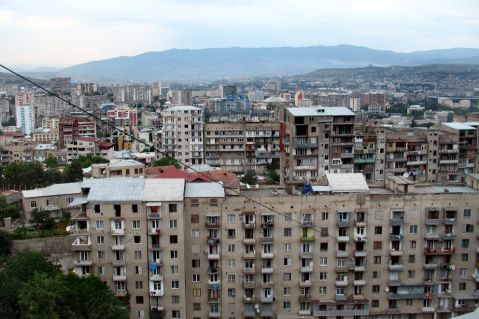10/08/09
Met more Armenian hospitality yesterday. On the recommendation of Leah Kohlenberg (an American journalist-turned-artist in Yerevan) we visited Alex Tarminasian at Berlin Hotel in Gyumri.
Describing himself as a “friend of artists”, Alex runs the guest house as a platform/gallery/exhibition space for local artists and also runs ‘art tours’ of Gyumri and artist workshops.
We walked in off the street:
‘We’re here to see Alex.’
‘He’s in a meeting. Who are you and what is it about?’
‘We’re artists, friends of Leah, here doing research. Leah said we should find Alex.’
This met with a nod.
‘He will be half an hour. Sit down and have some coffee, our treat.’
Alex arrives and gives us a tour of the hotel, which has paintings in each room, feeds us soup and apple wine made by a local artist (weirdly like a kind of cider concentrate – better than it sounds), and takes us to meet some of his artist friends.
Karen Barseghyan became an artist because of the earthquake of 1988 which took more than 20,000 lives in Gyumri and Spitak. He was trapped under rubble for three days and almost lost his right arm to gangrene but a doctor from Russia managed to save it with a series of operations.
Aged 9, he was told to start painting as a form of physiotherapy. His early work embraced pop art – all bright colours and big shapes. Recently he has started experimenting with concrete mixed into his paint which produces astonishing canvases which look like buildings.
After the earthquake many people were housed, temporarily, in shipping containers (known as domiks). 21 years later many, including Karen, his wife, two children and parents, are still living in the same makeshift homes.
15/3 is a collective of 3 young artists (Karen Barseghyan, Hrach Vardanyan and Gevorg Sargsyan) named after one of these containers where they held their first meetings.
We also met Albert Vardanyan, who is an amazing sculptor working mostly in bronze. His works range from the very abstract to the very representational. He carries out every stage of the work himself.
We wish we could have stayed longer but it’s time to head for Georgia for our residency at Art Villa Garikula.

























